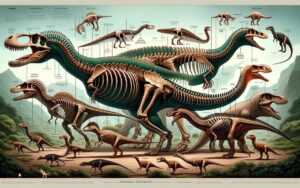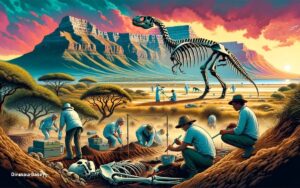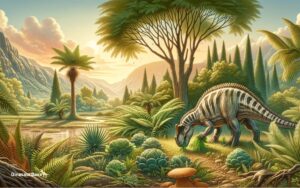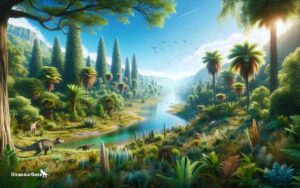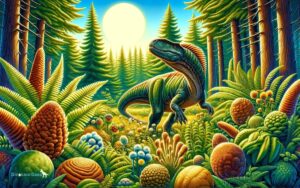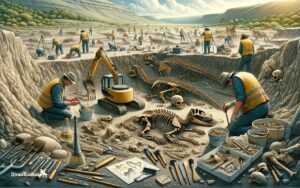What Did Prehistoric Reptiles Like Aardonyx Eat?
Prehistoric reptiles like Aardonyx were herbivores, primarily feeding on plants. These ancient creatures existed during the Early Jurassic period.
Understanding the dietary habits of prehistoric creatures offers fascinating insights into the past ecosystems.
Aardonyx, a genus of basal sauropodomorph, occupied a significant evolutionary space between earlier bipedal dinosaurs and the later, massive quadrupedal sauropods. With sturdy bodies and robust limbs, Aardonyx likely browsed on low-lying vegetation.
Its teeth and jaw structure suggest an efficient grinding and processing mechanism for fibrous plant materials.
Paleontologists study fossils such as teeth marks on plants and coprolites to deduce these dietary patterns.
Focused on the Early Jurassic era, research into species like Aardonyx sheds light on the transition phase in dinosaur evolution where diet significantly influenced the path to the gigantic sauropods that would follow.
Engaging with this prehistoric narrative enriches our understanding of life’s ancient unfolding on Earth.
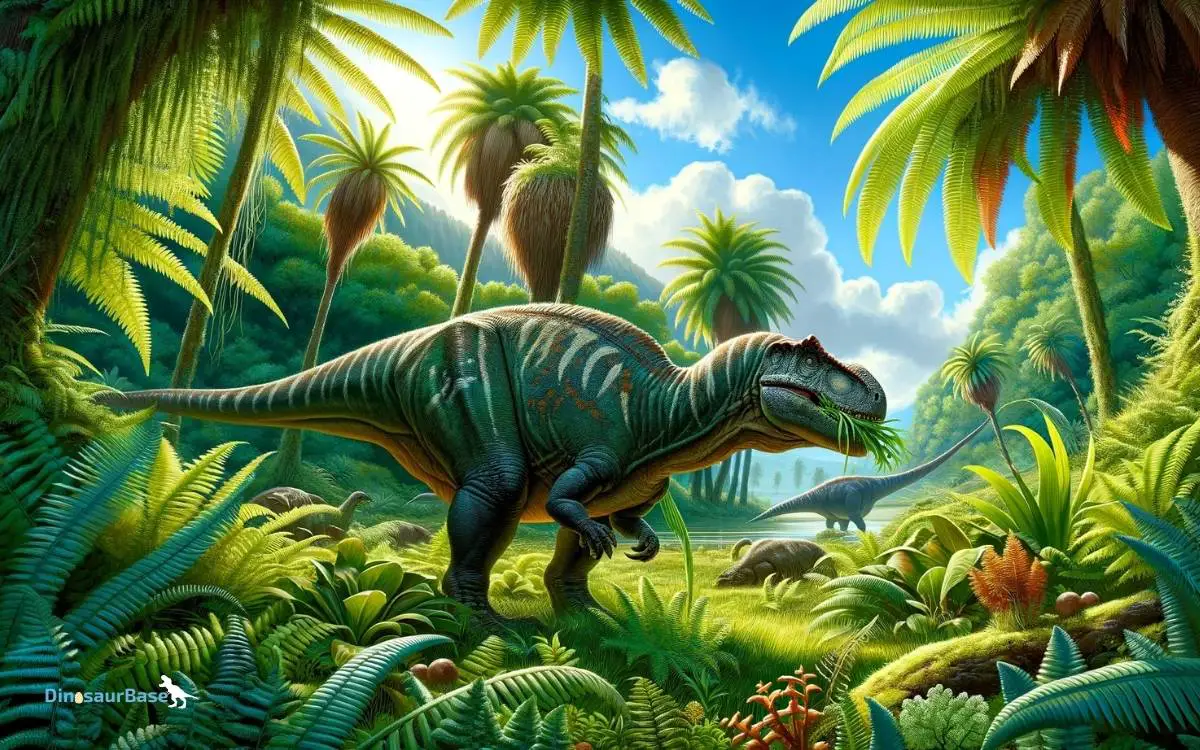
A Glimpse Into The Triassic World
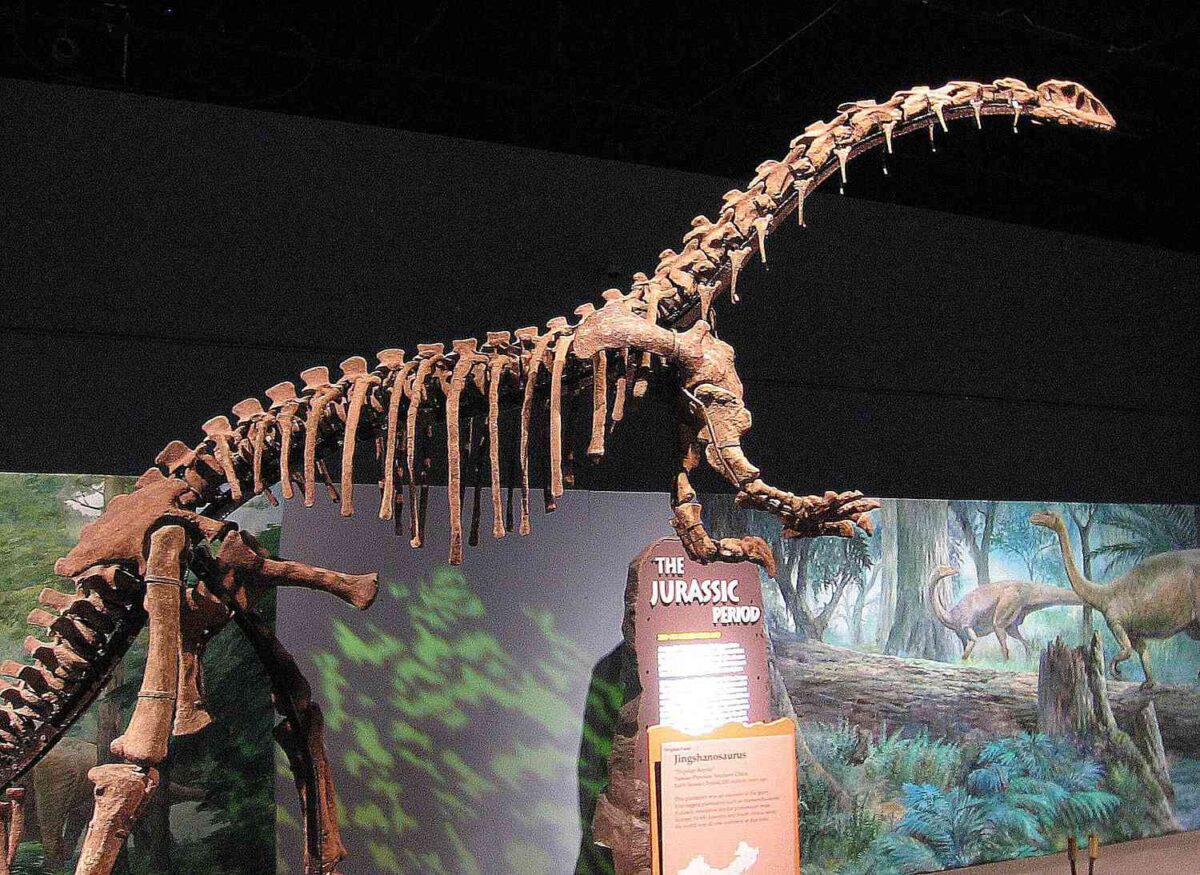
Imagine a world over 200 million years ago, filled with vast expanses of untamed wilderness and the rise of incredible creatures.
This was the Triassic Period, a time when reptilian giants began to assert their dominance on a lush, green Earth.
Journey back to this era, and let’s explore the life and diet of one such behemoth: the Aardonyx.
The Era Of Reptilian Dominance
The Triassic Period marked the beginning of a new world order. Dinosaurs, the ultimate reptiles, started their ascent.
These creatures ruled the land for over 160 million years. Surrounded by a variety of plants, their evolutionary journey formed the cornerstone of prehistoric life.
- Gigantic ferns and coniferous trees sprouted, offering abundant food.
- Early meat-eaters hunted in the shadows of the lush Triassic flora.
- Herbivores grazed the landscape, growing to monumental sizes.
Introducing Aardonyx, A Triassic Behemoth
In the heart of the Triassic world lurked Aardonyx, a large dinosaur with a hefty build. Let’s break down what it nibbled on:
- Categorized as a basal sauropodomorph, this reptile showed early signs of the massive sauropods that would follow.
- Sporting a long neck and strong legs, it stood ready to forage.
| Food Source | Type of Diet |
|---|---|
| Cycads and Bennettitales | Herbivorous |
| Horsetails | Herbivorous |
| Ginkgoes | Herbivorous |
The teeth of Aardonyx were designed for chomping on plants. It likely used its sharp claws to pull branches closer. Fossil evidence supports this herbivorous theory, carving a clear picture of Aardonyx’s lifestyle.
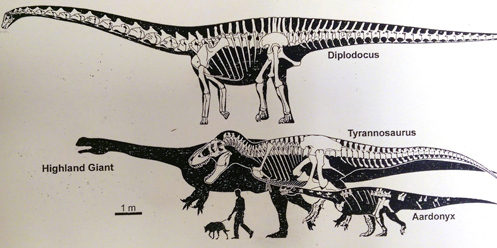
Credit: blog.everythingdinosaur.com
The Aardonyx’s Place In The Food Chain
Have you ever wondered about the giant reptiles that roamed our earth millions of years ago? One such creature, Aardonyx, lived during the Early Jurassic period. Let’s explore its role in the food chain and unravel what it might have eaten.
Anatomy Of An Early Dinosaur
The Aardonyx dinosaur was a sight to see. With their long necks and tails, they roamed the earth on two legs. Scientists study their fossil bones to guess what they ate.
- Strong hind legs: Helped them walk upright
- Long necks: Reached high or low plants
- Flat teeth: Good for grinding plants
Carnivore Or Herbivore? Assessing The Diet
Was the Aardonyx a meat-eater or a plant-eater? The evidence points to a herbivorous diet.
Let’s break this down:
| Feature | Evidence | Diet Suggestion |
|---|---|---|
| Teeth | Flat and wide | Plants and leaves |
| Jaw mechanism | Not ideal for heavy biting | Favoring softer vegetation |
| Digestive system | Suggested by body size | Herbivorous, needing much plant matter |
In conclusion, features like weak biting force and large gut capacity suggest it ate mostly plants. Aardonyx held an essential place in the food chain, likely as a peaceful, plant-eating giant.
Sifting Through Fossil Clues
Exploring the ancient world of prehistoric reptiles leads us to intriguing questions. Among these creatures, Aardonyx stands as a fascinating subject.
What did this Triassic herbivore snack on? Let’s dig into fossil evidence to uncover the diet of Aardonyx.
Teeth And Jaw Structure: Diet Indicators
The teeth and jaws of Aardonyx offer vital clues about its menu. Evidence suggests a diet heavy on greens rather than meat:
- Fossils reveal leaf-shaped teeth, ideal for munching plants.
- Jaws were less powerful compared to carnivorous kin, hinting at a vegetarian lifestyle.
- Flat teeth surfaces tell a tale of grinding foliage, not tearing flesh.
Digestive Tract Fossils: Invisible Evidence
While digestive tract fossils are rare, they can explain a dinosaur’s diet:
- Scientists analyze plant residue in the region where the gut would be.
- Though such fossils for Aardonyx are scarce, related species suggest a similar herbivorous diet.
- The presence of gizzard stones, or gastroliths, would support the idea of a plant-based feeding habit to help grind up tough vegetation.

Credit: www.dinosaurfarm.com
Understanding Prehistoric Food Sources
Prehistoric creatures roamed the earth long before humans. The Aardonyx, a Triassic reptile, had a diet that raised curiosity. To understand what these giants ate, we dive into their ancient world.
The Vegetation Of The Triassic Period
The Triassic period was rich with diverse plant life. Foods that Aardonyx may have fed on include:
- Cycads: Palm-like plants that still exist today.
- Ginkgoes: Trees with fan-shaped leaves.
- Conifers: Cone-bearing trees like pines and firs.
These plants were common and likely made up a major part of the Aardonyx diet.
Other Reptiles As Potential Prey
Though primarily a herbivore, Aardonyx might have eaten smaller reptiles.
Possible prey included:
| Reptile | Habitat | Size |
|---|---|---|
| Lystrosaurus | Land-based | Small |
| Euparkeria | Near water sources | Very small |
| Proterosuchus | Riverside | Medium |
While plants were the staple, Aardonyx could have adapted its diet in tough times.
Comparative Analysis With Modern Reptiles
Embarking on a journey through time, the Comparative Analysis with Modern Reptiles provides insights into the past.
We explore the fascinating world of prehistoric reptiles like Aardonyx. Let’s uncover what these ancient giants munched on by comparing them to their modern relatives.
Feeding Behaviors: Then And Now
Modern reptiles show us diverse ways to catch and eat food. Aardonyx, a Triassic herbivore, had a different approach:
- Slow movement meant Aardonyx grazed calmly.
- They had flat teeth for grinding plants.
- Bek-like mouths helped clip foliage.
Looking at today’s reptiles:
| Reptile | Diet | Feeding Strategy |
|---|---|---|
| Iguana | Herbivore | Nimble climbers; use height to reach leaves. |
| Komodo Dragon | Carnivore | Potent hunters with strong jaws to subdue prey. |
| Tortoise | Herbivore | Ground foragers, slow and steady eaters. |
The Evolution Of Reptilian Diets
Reptilian diets have evolved over millions of years:
- Early reptiles like Aardonyx ate mostly plants.
- Change in flora led to diet adaptation.
- New predators emerged, leading to different feeding behaviors.
Modern reptilian diets vary greatly:
- Green Iguanas eat leaves, flowers, and fruit.
- Some turtles are omnivores, eating meat and veggies.
- Geckos eat insects, displaying nimble hunting tactics.
Did Aardonyx’s Diet Contribute to Its Fossilization and Preservation?
The study of Aardonyx’s diet and its relationship to fossilization and preservation has been a subject of interest for researchers. Various excavating aardonyx fossils methods have been used to uncover clues about the creature’s eating habits and how they may have impacted its preservation over millions of years.
What were the dietary habits of prehistoric reptiles like Aardonyx and Achelousaurus?
The achelousaurus diet in late cretaceous likely consisted of ferns, cycads, and other low-lying vegetation. On the other hand, the aardonyx, a long-necked, plant-eating dinosaur, may have had a similar diet. Both reptiles lived during a time when vegetation was plentiful and diverse.
The Impact Of Aardonyx’s Diet On Paleontology
Paleontology constantly uncovers new clues from the distant past. One significant puzzle piece is the Aardonyx, a prehistoric reptile. Its diet provides insights into ancient ecosystems. Let’s uncover what these creatures ate and their influence on dinosaur history.
Shaping The Narrative Of Dinosaur Evolution
Aardonyx lived over 200 million years ago, marking the shift from late Triassic to early Jurassic periods. Its diet plays a crucial role in tracing the lineage of massive, herbivorous dinosaurs.
Researchers analyze fossilized teeth and jaw structures to understand their eating habits. These findings help paint a clearer picture of how dinosaur diets evolved. With each discovery, the story of these ancient beasts becomes richer.
Dietary Habits And Their Role In Survival
The Aardonyx’s diet has significant repercussions for survival strategies in prehistoric times. Studies suggest they were herbivores, munching on plants, ferns, and leaves.
This dietary choice influenced their physical development, favoring strong limbs and specialized teeth to process tough vegetation. It’s fascinating to see how their food sources dictated their evolution.
Here are a few key takeaways from their herbivorous lifestyle:
- Strong legs supported their weight while foraging.
- Long necks helped them reach a variety of plants.
- Flat teeth were perfect for grinding down plant matter.
:max_bytes(150000):strip_icc()/Apatosaurus-58a488495f9b58819cb94758.jpg)
Credit: www.thoughtco.com
Conclusion
Delving into the ancient past, we’ve uncovered fascinating insights about the Aardonyx’s diet. These majestic prehistoric reptiles dined primarily on plants, shaping an era long before us. Their eating habits offer clues to the ecosystem’s balance during their time.
As we explore further, each discovery brings us closer to a fuller understanding of these enigmatic giants and their place in our planet’s history.

